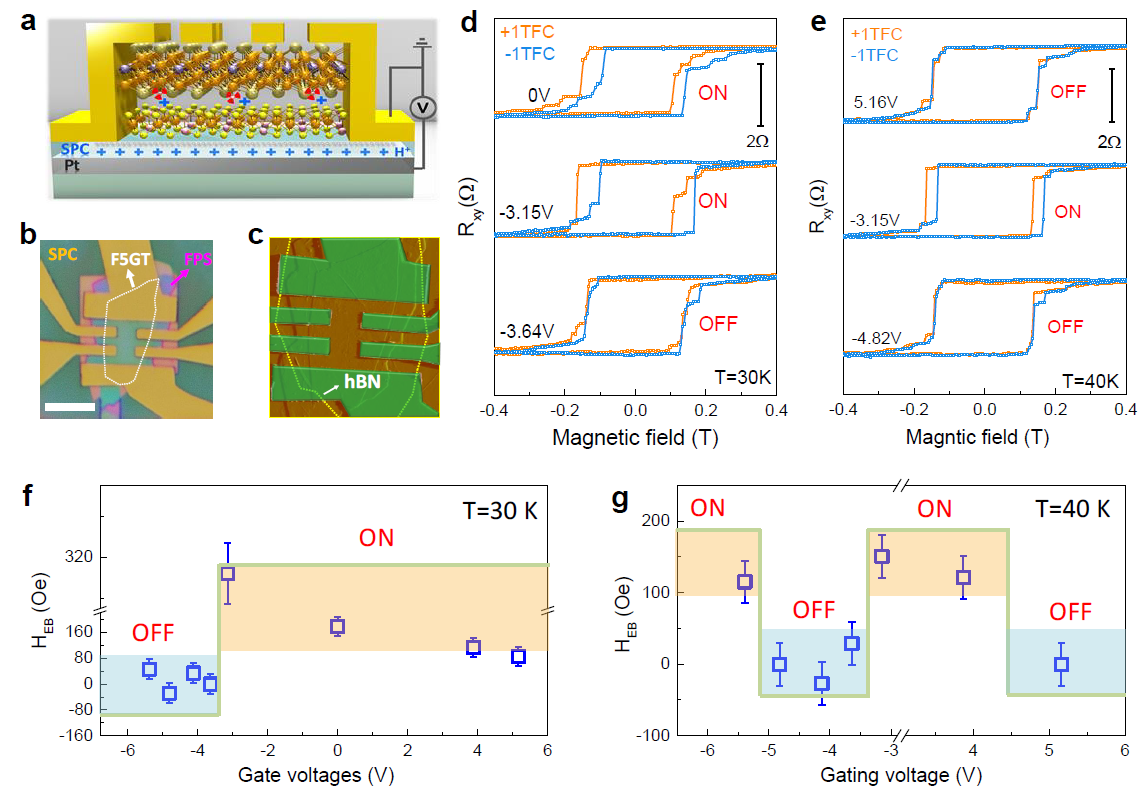Van der Waals (vdW) ferromagnets are the building blocks of vdW heterostructure devices such as vdW ferromagnetic (FM)-antiferromagnetic (AFM) heterostructure, and vdW FM-ferroelectric heterostructure. These vdW heterostructure devices have attracted a lot of attention due to their promising applications in modern spintronics. However, the weak interfacial coupling of vdW heterostructures due to the large vdW gap has hindered the development of this emerging field. How to electrically tune the interface coupling in vdW heterostructure device remains elusive.
Prof. ZHENG Guolin from the Hefei Institutes of Physical Science of the Chinese Academy of Sciences, collaborating with Prof. Lan Wang from Royal Melbourne Institute of Technology University, has experimentally studied the interface coupling in FePS3-Fe5GeTe2 van der Waals heterostructures via proton intercalations.
For the first time, scientists have discovered that the interface coupling-induced exchange bias effects can be electrically controlled via gate-induced proton intercalations, providing a promising way to manipulate interface coupling in more vdW heterostructures. Results were published on Nano Letters.
In this study, the team fabricated FePS3-Fe5GeTe2 vdW heterostructure devices (with the thickness of FM layer Fe5GeTe2 between 12-18 nm) and showed a weak exchange bias effect below 20 K due to interfacial magnetic coupling.
However, when they put the heterostructure devices onto the solid proton conductors, the blocking temperature (where the exchange bias effect disappeared) was largely boosted up to 60 K. Moreover, the observed exchange bias effect can be electrically switched "ON" and "OFF" due to the intercalations or de-intercalations of the protons under a gate voltage.
Interestingly, the magnetic properties of the top Fe3GeTe2 layer, including coercivity, anomalous Hall resistivity and Curie temperature, didn't change during the whole gating process, indicating that the proton intercalation has a very limited effect on the FM layer.
Further theoretical calculations based on density functional theory demonstrated that the proton intercalations mainly affected the magnetic coupling at the interface as well as the magnetic configurations in AFM layer, leading to a gate-tunable exchange bias effect.
This work was financially supported by the Australian Research Council Centre of Excellence in Future Low-Energy Electronics Technologies, the National Natural Science Foundation of China and the Key Research and Development Project of Guangdong Province.







